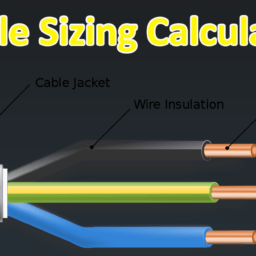In harsh environments, cables are terminated using cable glands. Basically, the role of this component is to pass a cable, wire or tube through a hole or enclosure. With the help of these components, you can enjoy strain relief and many other benefits.
Cable glands are also used as a seal to prevent exterior impurities from damaging the cable or electrical system. Given below is the list of a few common contaminants or impurities:
- Dost
- Dirt
- Liquids
As said earlier, it prevent the cables from pulls and twists. Therefore, the cable stays in the machine. This way they allow a stable and safe connection between the cable and the machine.
Now, let’s find out about the cable gland parts and the materials they are made of.
Cable Gland Parts
As said earlier, cable glands are mechanical devices that are used with cable and wiring for the following purposes:
Control and Instrumentation
Automation of different systems such as lighting, power, telecoms and data, etc
Basically, this product is used has a type of terminating and sealing tool. Aside from this, it makes sure the electrical devices and the enclosures are protected.
Specs of Cable Glands
If you are going to buy cable glands, you need to know a couple of important things. First of all, you need to keep in mind that the specifications of this product are also important just like anything. Given below are your choices as far as specifications are concerned:
Material
Different types of materials are used to make this product based on the needs of different kinds of users. Common materials include aluminum, brass, nylon, PVC, steel and stainless steel. Let’s discuss these materials one by one.
Steel: As the name suggests, steel is used to make cable glands. The reason is that steel is one of the strongest materials available these days.
Stainless Steel: The good thing stainless steel is that it is chemical and corrosion-resistant. Besides, it features a comparatively high-pressure rating.
Polytetrafluoroethylene (PTFE): This material has low friction and strong resistance against chemicals.
Aluminum: The good thing about Aluminum is that it offers good electrical and thermal conductivity. Besides, it can fight against reflectivity and oxidation.
Brass: Just like steel, brass has a lot of strength. Aside from this, it features high-temperature ductility, impressive bearing properties, high conductivity, good corrosion resistance, and low magnetic permeability.
Nylon: Keep in mind that nylon is made of different grades of polyamides. Moreover, this general-purpose material has a lot of different uses. The good thing is that nylon is tough and offers good pressure rating.
PVC: Previously, PVC was called polyvinyl chloride. Nowadays, it is one of the most common materials for making different things. The good thing about PVC is that it offers non-toxic characteristics, high flexibility, and a smooth surface. Since PVC has a passive nature, some specific grades are used in different food and chemical processes.
Hopefully, you will find this article helpful.
BY by GAHZLY
El Sewedy wire prices 2022
#Cable #Glands #Basics

